In Malaysia we take our food seriously.
We reckon that food is the first thing that come to our minds when we open our eyes in the morning. Thanks to the multi-ethnic makeup of our country’s population we have the luxury of eating a different dish for breakfast each day of the year with a high probability of not repeating any dish within the next 356 days.
Thus it was a mammoth task to shortlist only 8 Malaysian breakfast choices but we did our best. So here are some examples that you should try when you’re in our beloved city.
Here, we take you through choices 1 to 4.
1. Imbi morning market
We love markets. The mix of people-watching, checking out fresh produce and sampling the freshly prepared local food all in one venue is to me the perfect key to get acquainted with any city or country.
The Imbi market is right in the heart of Kuala Lumpur. It comprises of 2 main sections – the wet market (where the locals buy vegetables and meat) and the hawkers’ section where they trade some of the best Malaysian food.
The market starts early in the morning at around 6.30am and closes around 12pm to 1pm but it’s best to go early, walk around, explore both sections and then reward yourself with a hearty breakfast.
Ann Nasi Lemak

Malaysian nasi lemak is probably one of our iconic dishes.
Due to our multi-racial society, we have several versions of this popular dish. The basics are similar though; fragrant rice cooked in coconut milk served with fried anchovies, peanuts and a hearty serving of sambal (chili paste) plus an egg. The Chinese may prepare their sambal differently and serve theirs with an assortment of other dishes such as fish, meat (pork & chicken) and vegetables.
Ann’s version rocks because of her pork skin curry. These pieces of spongy skin absorb sauce easily and give a delightful springy bite.
If you need your morning caffeine then the Ah Weng Koh Hainan Tea stall is your best friend.
This isn’t single origin nor cold pressed sophistication but just plain good strong coffee to jolt you out of your morning daze.
Undecided whether to have coffee or tea? Try the best of both worlds with a ‘cham’ -a mixture of tea and coffee.
Each glass served here comes with beautiful thick frothy foam dripping off the cup. Add an order of half boiled eggs plus the local toast slathered with a piece of cold butter and our local kaya coconut jam to go with it.
It’s a Malaysian experience like no other!
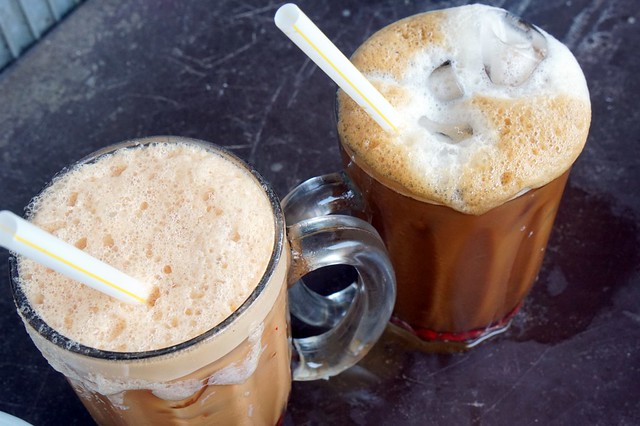
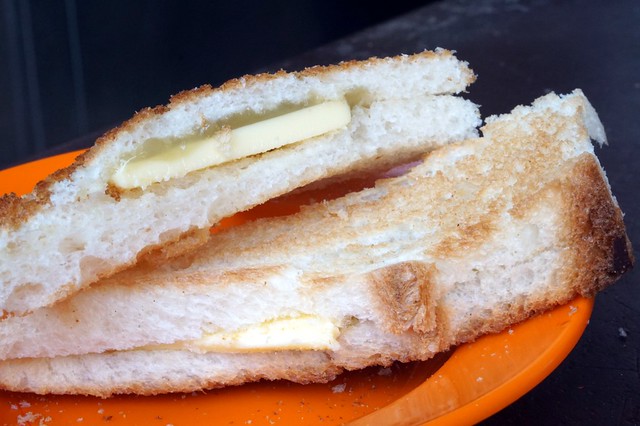
Almost every stall here offers a delicious breakfast option so if you have further tummy space go for the curry noodles, char kuey teow (fried rice noodles), freshly baked egg tarts, yong tau foo (stuffed vegetables with fishpaste) and well, just about anything that caught your fancy!
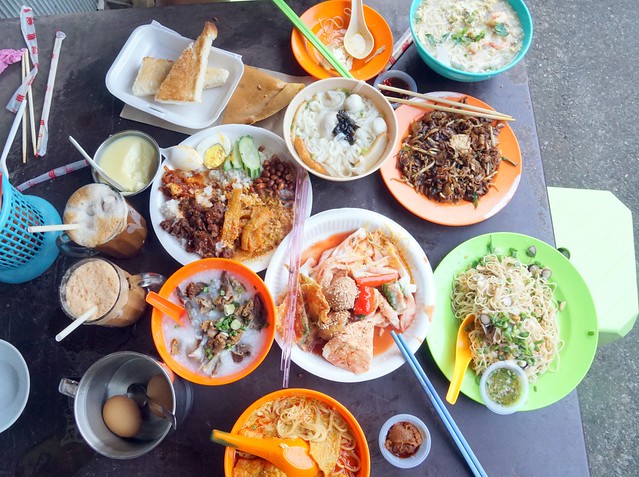
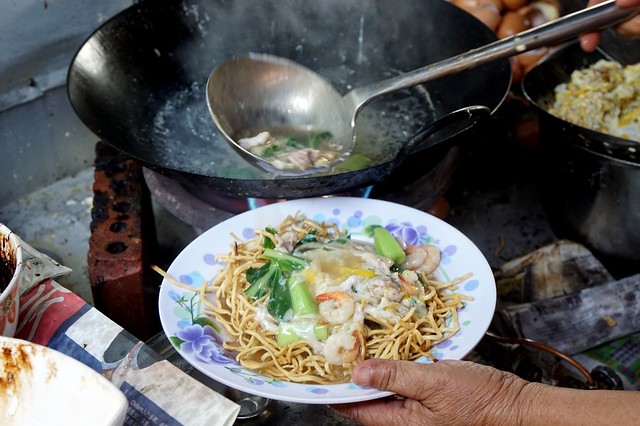
Oh, don’t forget to grab some of the Bunn Choon baked-fresh-on-premise egg tarts too.
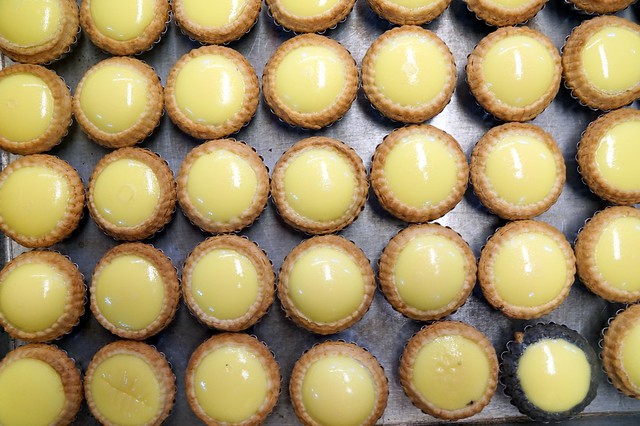

Getting to Imbi Market:
Address: Pasar Baru Bukit Bintang, Jalan Melati, Pudu, 55100 Kuala Lumpur
Refer map: https://goo.gl/maps/tVKrj
How to get there (Recommended mode): Take the train (Monorail) to Imbi Station. Take a metered taxi from Imbi Station.
What to wear: Light clothing, shoes.
What to expect: Local spot. Expect a busy trading market and a crowded hawker food and fresh produce area.
Operational hours: 6am – 1pm. Everything (Fresh produce and food market) is closed on Mondays but some stalls observe their own rest days.
Tips on safety, communication, ordering and directions:
It is a locals’ market so you can expect some curious stares. However, people are generally friendly so just ask around if you’re unsure. Some may not speak English but they do understand numeric English so just point at the items or food you want and say “One or two or three” and “Eat here or Take away”.
Prices are usually shown on the stall; S for small portion – RMXX (RM denotes Ringgit Malaysia) or B for Big.
Like anywhere else do watch out for your belongings as you navigate the market space.
2. Pudu Wai Sik Kai
Wai Sik Kai is Cantonese for “glutton street”. The name itself tells you what to expect doesn’t it?
And the Pudu Wai Sik Kai lived up to its name for decades. Some of the stalls open throughout the day until late night while some are operational in the mornings only.
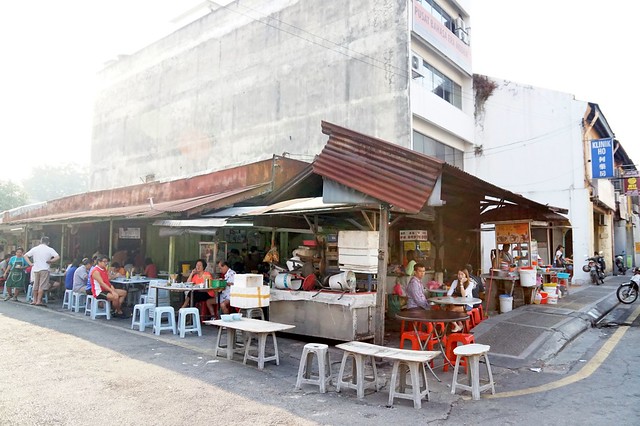
For breakfast, we are fond of the Yong Tau Foo (various vegetables and beancurd stuffed with fish paste).
The key to good Yong Tau Foo is the fish paste. Some stuffing may be a mixture of meat (usually pork) and fish. Whichever it is, a good ratio of fish meat to the other seasoning and (perhaps) flour makes all the difference.
The Yong Tau Foo is made fresh near the stall so you can observe while they are being made if you’re interested. Take a video too if you wish!
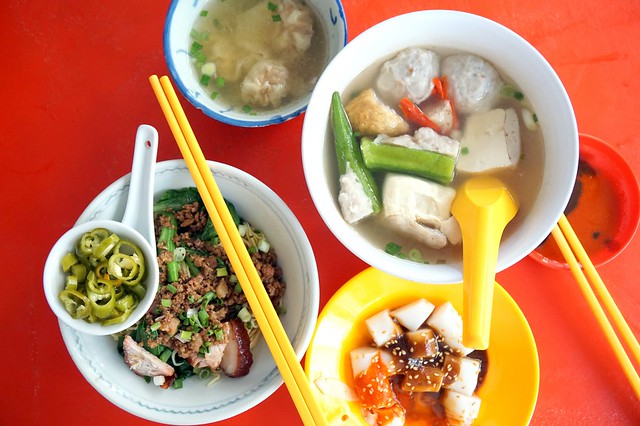
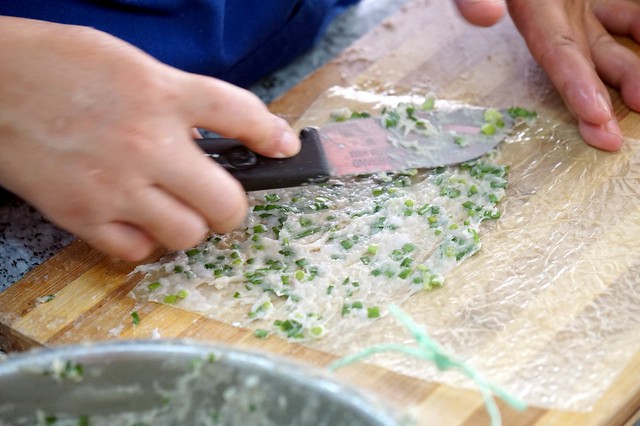

Another popular order among the patrons here is the Tai Bu Hakka Noodles.
This is a stall currently in its 4th generation of ownership and the highlight of this traditional Hakka dish is the springy noodles doused with fragrant pork lard. It is flavourful enough on its but even better with the mince pork, char siew and wantan (pork dumplings).
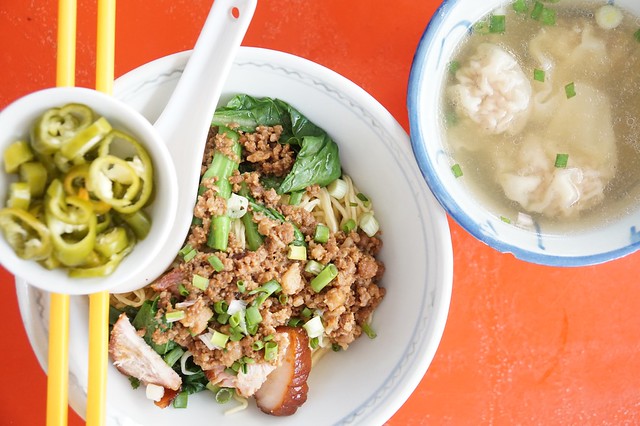
Getting to Pudu Wai Sik Kai:
Address: Jalan Sayur off Jalan Pudu
Refer map: https://goo.gl/maps/1HVvD
How to get there (Recommended mode): Take the train (RapidKL LRT – Ampang Line) to Pudu Station. Walk from Pudu Station. Exit the station, look for the sign that says “Jalan Pudu” and walk toward Jalan Pudu. When you come to the busy main road, cross it and turn left.
Walk til you see the busy stalls.
What to wear: Light clothing, shoes.
What to expect: Local spot. Expect a busy food street market.
Operational hours: 7am til late.
Hakka stall: Closed on Mondays and 1st and 15th of the month in Lunar calendar.
Yong Tau Foo: No fixed day.
Other stalls: NA
Tips on safety, communication, ordering and directions:
Traders would understand basic English and ordering is not a problem. Prices are usually shown on the stall; S for small portion – RMXX (RM denotes Ringgit Malaysia) or B for Big.
Like anywhere else do watch out for your belongings.
3. Petaling Street and Madras Lane
Petaling Street is the shoppers’ and food paradise. There is almost everything here from clothes, souvenirs to electronic items to fabrics; and all at a great bargain.
Other than local goods, Petaling Street is renowned for selling imitation goods like handbags, wallets, watches and shoes from brands like Adidas, Louis Vuitton, Calvin Klein, Nike and so on. Take a walk along the street and you will know what I mean.
The Hon Kee Porridge is a generations old legacy (since 1959); basic but smooth flavoursome gruel with the choice of fresh fish, pork or with frog legs.
Another famous delicacy in Petaling Street is the Sei Ngan Chai (four-eyed guy/a reference to a guy in spectacles) roast duck which is sold at a mobile stall along this street.
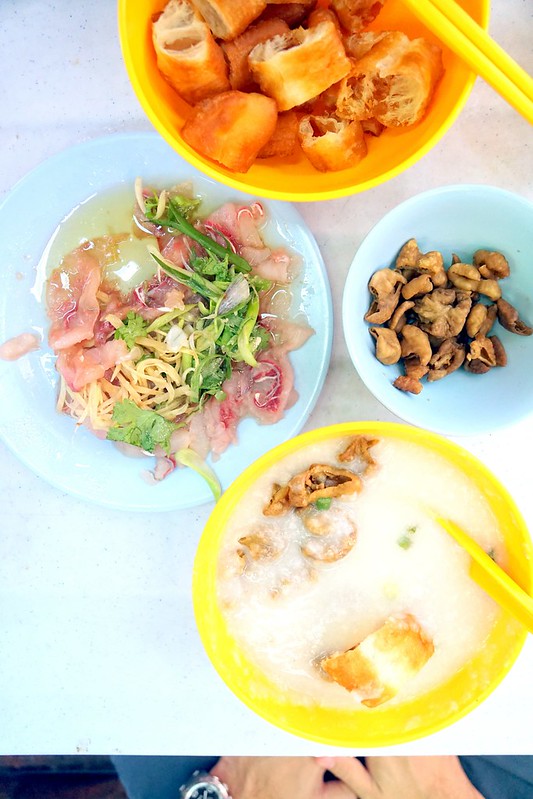
Sei Ngan Chai duck stall:


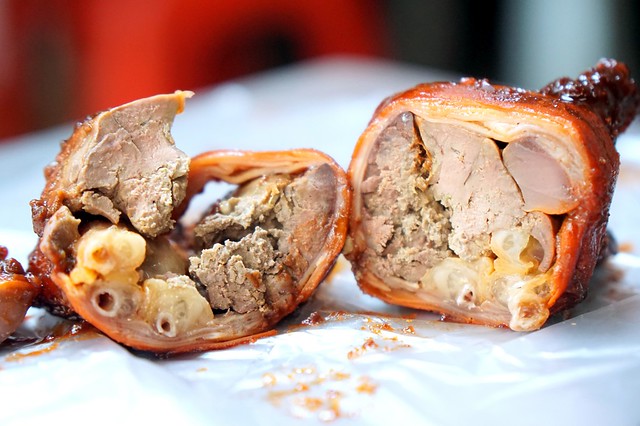
Be sure to be there early as the roast ducks are sold out by lunch time.
We suggest packing half a duck (RM23) and devouring it with some lip-smacking curry laksa and pork noodles at Madras Lane, a food street of sorts also within the vicinity of Petaling Street.
Madras Lane:

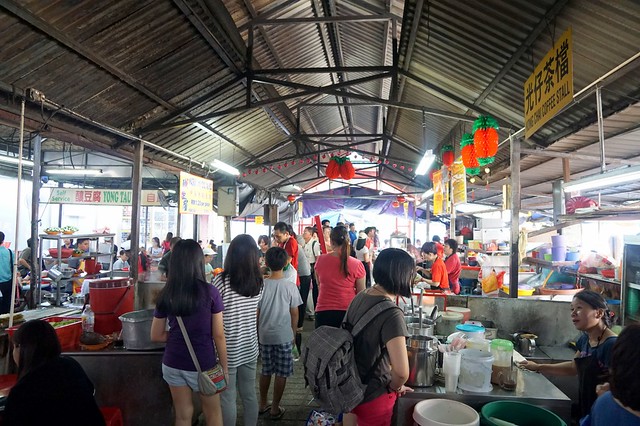
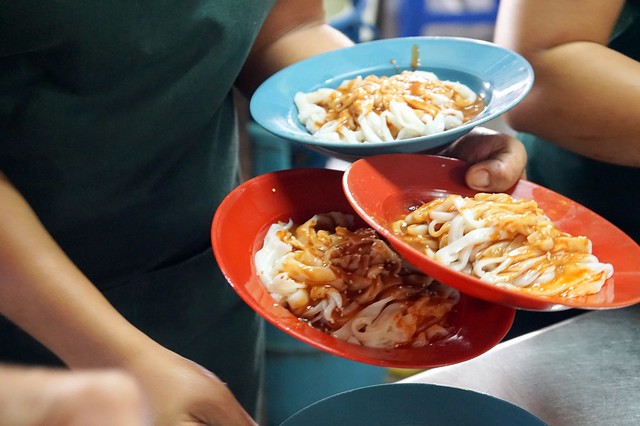

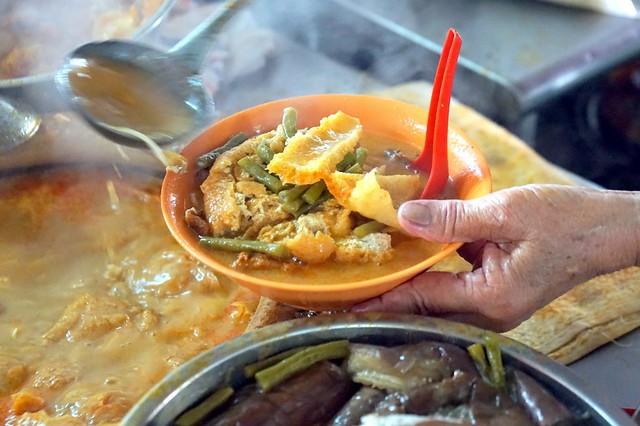

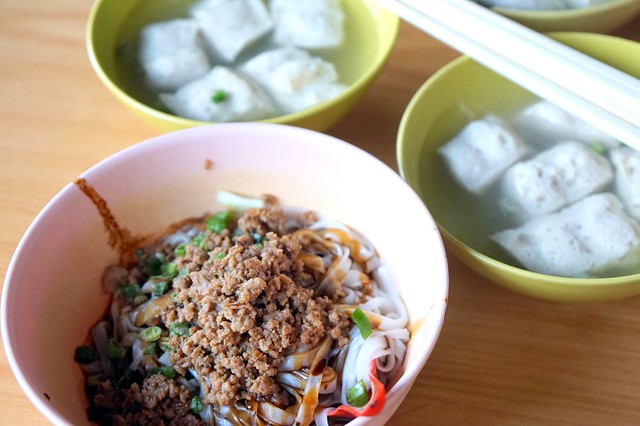
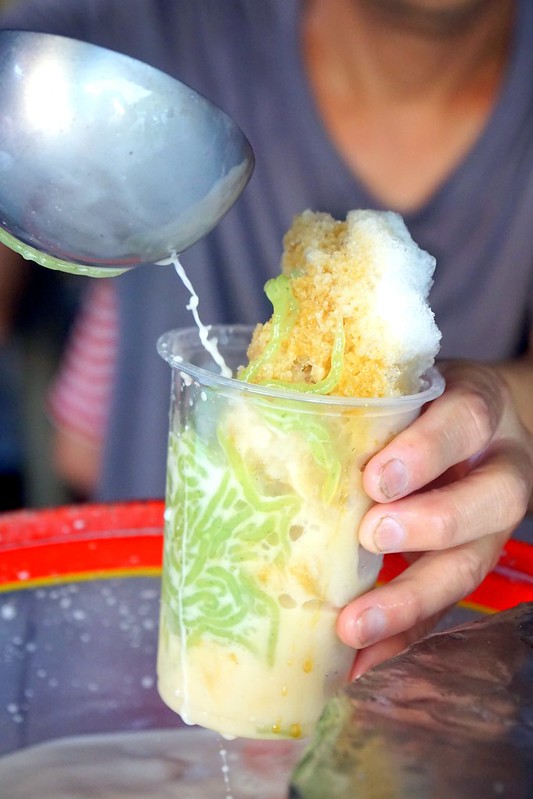
Getting to Petaling Street/Madras Lane:
Address: Morning market at Petaling Street, Jalan Petaling, 50000 Kuala Lumpur
Refer map: https://goo.gl/maps/UJ3Mw
How to get there (Recommended mode): Take the train (RapidKL LRT – PUTRA Line) to Pasar Seni Station. Walk from Pasar Seni Station.
What to wear: Casual.
What to expect: A busy market area with historical pre-war shop houses on the street with a wide range of classic Chinese food. Some food stalls are only open in the morning while others only at night.
Take your time to explore as finding some of the hidden gems can be a tricky task since some stalls are hidden in the alley or tucked behind a row of shops.
Operational hours: 7 am onwards. Madras Lane is open until noon. Sei Ngan Chai is open til sold out which is usually by 1030am.No off days.
Tips on safety, communication, ordering and directions:
Traders would understand basic English and ordering is not a problem. Prices are usually shown on the stall; S for small portion – RMXX (RM denotes Ringgit Malaysia) or B for Big.
Like anywhere else do watch out for your belongings.
4. Bak Kut Teh at Jalan Imbi
On this street there are about 4-5 Bak Kut Teh restaurants. Our recommendation is Ah Hee Bak Kut Teh, a smaller shoplot in the middle of the row.
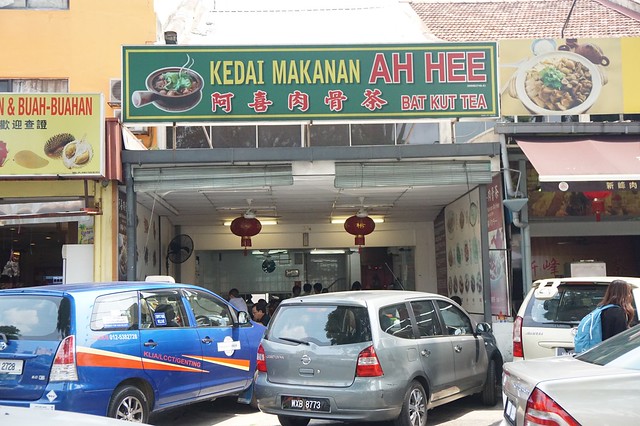
Bak Kut Teh is a herbal soup concoction from boiling a variety of herbs for hours with various pork cuts ranging from knuckles to ribs and lean cuts. More often than not, most outlets would offer offals in the mix.
This dish is best eaten with oil rice or you can choose to have it with plain rice. The common condiments are raw garlic, chopped chilli and soy sauce.
Savour the savoury and intense herbal soup and the tender meat with some raw garlic and chilli. The accompanying youtiao (crunchy fried crullers) are meant to be dunked into the soup and eaten together with everything else.
If you’re adventurous enough, request for the offals (pork stomach, intestine, liver, heart, kidneys) and try those too!
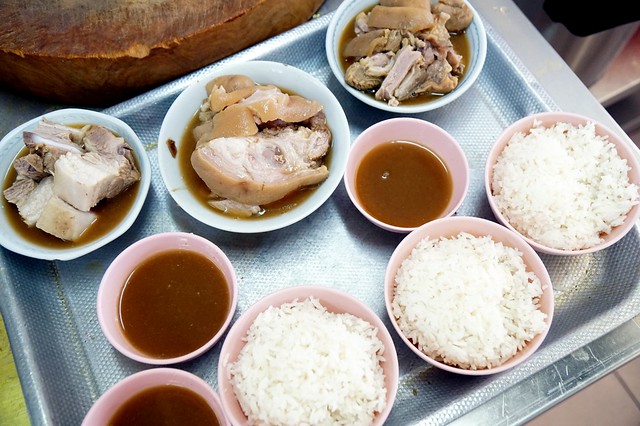
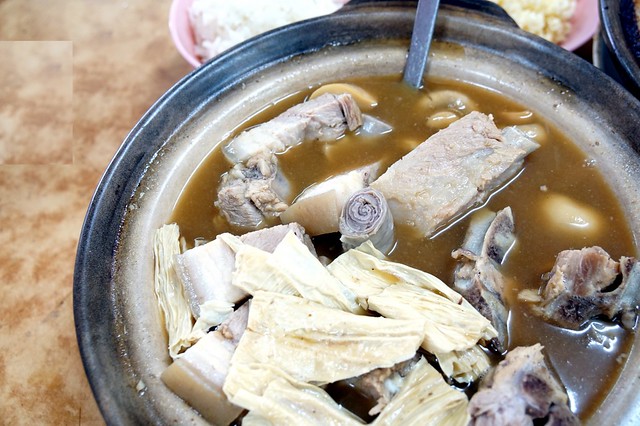

Getting to Ah Hee Bah Kut Teh:
Address: Jalan Imbi Klang Valley 55100.
Refer map: https://goo.gl/maps/Vme49
How to get there (Recommended mode): Take the train (Monorail) to Bukit Bintang Station. Take a metered taxi from Bukit Bintang Monorail Station.
What to wear: Light clothing, shoes.
What to expect: Local coffee shop ambiance, non-air conditioned. It may get a bit crowded at peak hours.
Operational hours: 5.30am until 2pm or until sold out.
Closed: Wednesdays
Tips on safety, communication, ordering and directions:
The menu is on the wall. You should order according to number of diners as the portion per pot is allocated according to the number of diners, for example RM42 for 2 pax and so forth. Tea, fried crullers, rice and any additional orders are priced separately.
Next: Top 8 breakfast choices in Kuala Lumpur, Part II
![]()
Read Next:
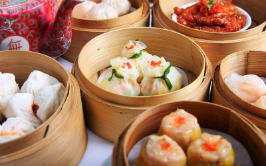 |
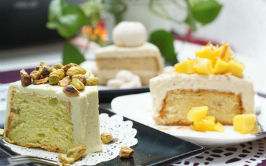 |
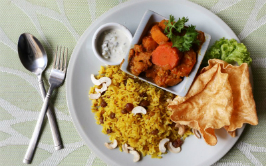 |
| 10 Healthy Malaysian Breakfast Meals (Yes, They Exist!) | 8 Desserts To Try In Kuala Lumpur – Part I | Top 5 Vegetarian/Vegan Places To Check Out In Kuala Lumpur |
Get all the latest travel stories from Zafigo. Follow us:
[button url=”https://www.facebook.com/zafigo” size=”small” value=”Facebook” color=”#94288e”] [button url=”https://twitter.com/ZafigoAsia” size=”small” value=” Twitter ” color=”#89c44c”] [button url=”https://instagram.com/zafigoasia” size=”small” value=”Instagram” color=”#14afa9″]
